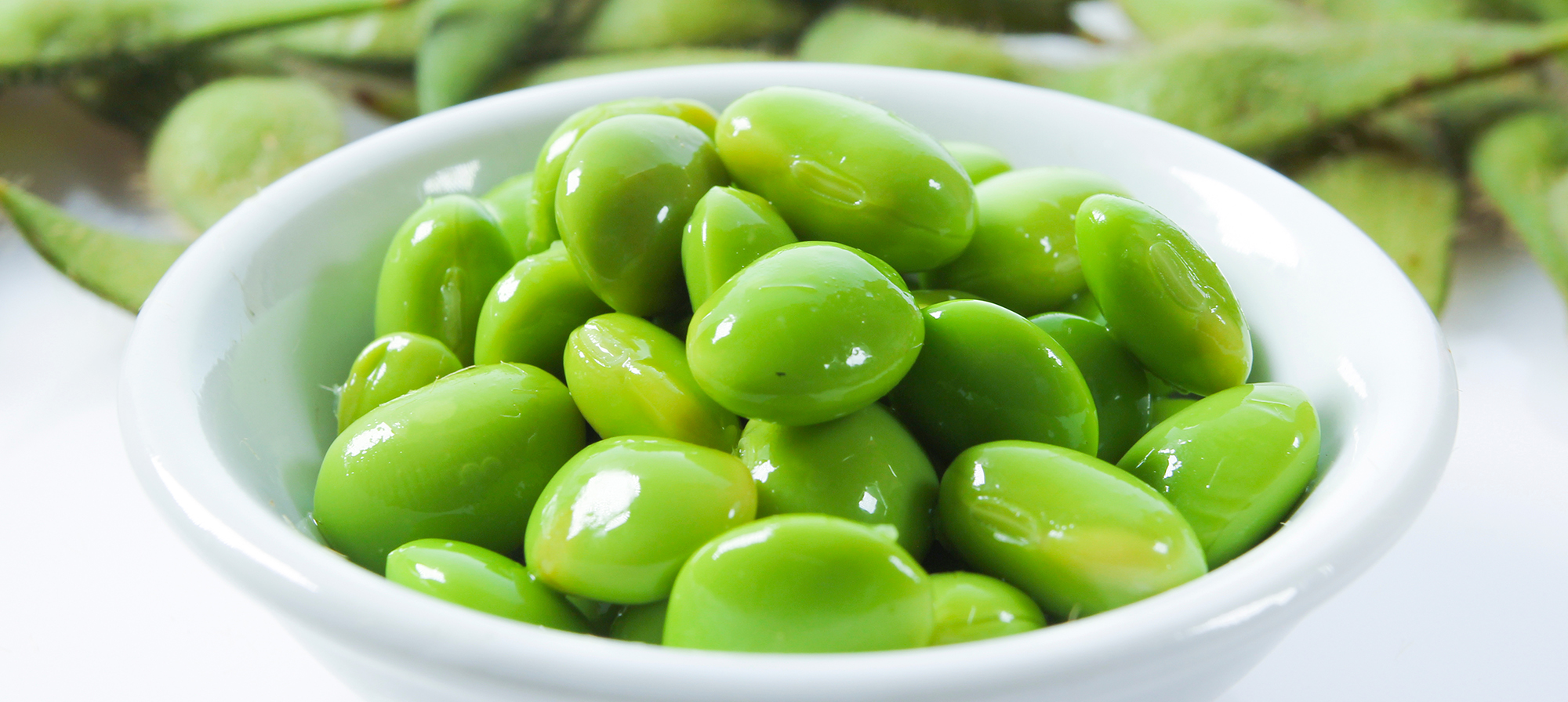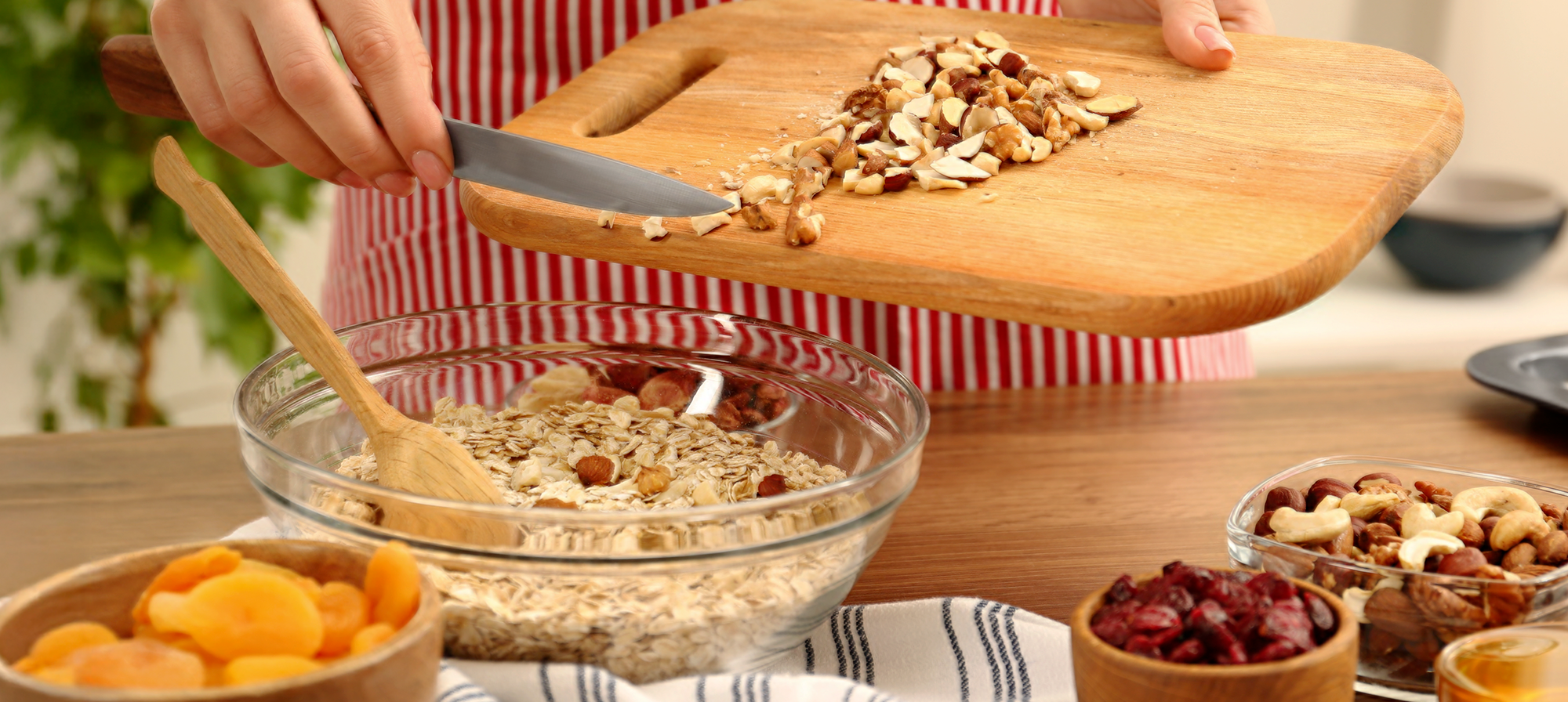Healthy recipes that taste good and are easy to make can be hard to find. Here comes edamame to the rescue. This superfood makes an easy-to-prep, healthy meal that’s a real palate pleaser.
Edamame (pronounced ed-ah-MAH-may) is the name for young or immature soybeans. These bright green beans make a great snack, appetizer, or side dish. They’re tasty, easy to prepare, quick to cook, and healthy to boot. And with just a few added ingredients, you can lift edamame up to become the star of the show. So, try this healthy recipe: Edamame With Ginger and Sesame Dressing.
Here’s a bit about the nutrients you’ll find in this savory salad.
What are the health benefits of edamame?
Though small, edamame packs a powerful nutritional punch. It is:
- Rich in plant protein. In fact, soybean protein is a “complete” protein. That means it has the 9 essential amino acids that your body cannot make on its own. Learn about the vital jobs the 9 essential amino acids perform in your body.
- Low in saturated fat and high in unsaturated fat. Saturated fats can raise your bad cholesterol; unsaturated fats can help support healthy cholesterol levels. Maintaining healthy cholesterol levels is a great way to lower your risk of heart disease.
- Full of fiber. Fiber can help support healthy cholesterol and blood sugar levels. It can also help you feel full for a longer period of time. Plus, it can support bowel health, including healthy bowel movements.
- Packed with other vitamins and minerals your body needs. These include B vitamins, potassium, iron, and magnesium.
There has been some talk of whether soybean-based foods can impact hormone levels. While soybeans have plant phytoestrogens, these are not the same as human estrogen. So, generally, foods like edamame, soy milk, and tofu should not affect your estrogen levels. If you have concerns about soy, talk with your doctor.
What else makes this such a healthy recipe?
The other foods in the salad recipe below are also brimming with nutrients.
Ginger has been shown to aid digestion and help soothe an upset stomach. And ginger may help quell inflammation in the body. That matters because inflammation, over time, can raise the risk for heart disease, joint swelling, dementia, and other health problems.
Sesame seeds have plant compounds that support healthy cholesterol levels. And both sesame seeds and sesame oil have a high amount of unsaturated fats, which can help maintain healthy cholesterol levels. So, just like edamame, sesame can help support your heart health.
Try whipping up this healthy recipe for a tasty, nutritious meal this week.

Edamame With Ginger and Sesame Dressing
Ingredients
- 1 pound edamame in pods (fresh soybeans)
- 1 cup chopped onion
- 1 tablespoon grated ginger
- 1 clove garlic, minced
- ¼ cup soy sauce
- ½ cup water
- 1 tablespoon cider vinegar
- 1 tablespoon sesame oil
- 1 tablespoon sesame seeds
- 2 tablespoons finely chopped peanuts
Directions
Cook edamame in boiling water until tender, about 4 minutes. Cool and remove edamame beans from their pods. Toss chopped onion and edamame together in a large bowl and chill for an hour.
In a separate bowl, combine ginger, garlic, soy sauce, water, vinegar, oil, and sesame seeds. Mix well.
Toss edamame-onion mixture with the dressing and combine well. Top with peanuts.
Yield: 6 servings
Prep Time: 1 hour, 10 minutes
Cook Time: 5-7 minutes
Difficulty: Easy
| Nutrition Facts |
| Calories 176 |
| Fat calories 87 |
| Total fat 9.7g |
| Saturated fat 1.2g |
| Cholesterol 0mg |
| Sodium 413.3mg |
| Total carbohydrate 13.2g |
| Dietary fiber 4.2g |
| Sugars 7.3g |
| Protein 11.7g |
Ready to get cooking?
You can usually find edamame at most grocery stores. Sometimes it’s fresh; sometimes it’s frozen. It may be shelled or unshelled, pre-cooked, or raw. The recipe in this blog features fresh edamame. But you can adjust the steps as needed depending on the edamame you find at the store.
Once you’ve got all of the ingredients you need, give this healthy recipe a try. You’re in for a tasty treat. And as an added bonus, this meal only calls for a brief bit of cooking on the stove—and no baking in the oven—so it won’t heat up your home. Plus, it’s served chilled. That makes it a refreshing meal choice during the warm summer months ahead.
Not a Silver&Fit® member? Learn more about everything the program has to offer, including more helpful healthy living tips like this, here on our website.
This information is not intended to take the place of regular medical care or advice. Please check with your doctor before using this information or beginning any self-care program.
References
American Academy of Family Physicians. (2022, September 23). Superfoods. FamilyDoctor. https://familydoctor.org/superfoods/
Cleveland Clinic. (2022, March 2). The health benefits of garlic. https://health.clevelandclinic.org/6-surprising-ways-garlic-boosts-your-health
Cleveland Clinic. (2024, December 26). Is soy good for you…or not? https://health.clevelandclinic.org/is-soy-good-for-you-or-not#:~:text=Fiber%20promotes%20a%20healthy%20gastrointestinal,boost%20your%20daily%20dietary%20fiber
Dana-Farber Cancer Institute. (2011, June 15). Is eating soy safe for breast cancer patients and survivors? https://www.dana-farber.org/newsroom/news-releases/2011/is-eating-soy-safe-for-breast-cancer-patients-and-survivors-
Harvard Health. (2020, March 1). What is inflammation and why is it dangerous? https://www.health.harvard.edu/staying-healthy/what-is-inflammation-and-why-is-it-dangerous
Harvard Health Publishing. (2020, September 1). Seed of the month: Sesame seeds. https://www.health.harvard.edu/heart-health/seed-of-the-month-sesame-seeds
Harvard School of Public Health. (2022, January). Straight talk about soy. https://www.hsph.harvard.edu/nutritionsource/soy/
Inserra, P., Brooks, A. (2017). Nutritional Modulators of Pain in an Aging Population, Chapter 5: Getting to the Root of Chronic Inflammation: Ginger’s Antiinflammatory Properties. Academic Press: Cambridge.
Mayo Clinic. (2024, December 11). Dietary fiber: Essential for a healthy diet. https://www.mayoclinic.org/healthy-lifestyle/nutrition-and-healthy-eating/in-depth/fiber/art-20043983
MedlinePlus. (2024, July 24). Dietary fats explained. https://medlineplus.gov/ency/patientinstructions/000104.htm
MedlinePlus. (2021, September 23). B vitamins. https://medlineplus.gov/bvitamins.html
United States Department of Agriculture. (2020, October 30). Edamame, cooked. https://fdc.nal.usda.gov/fdc-app.html#/food-details/1100450/nutrients
United States Department of Agriculture. (2019, April 1). Seeds, sesame seeds, whole dried. https://fdc.nal.usda.gov/fdc-app.html#/food-details/170150/nutrients
This article was written by Nora Byrne, edited by Gail Olson, and clinically reviewed by Elizabeth Thompson, MPH, RDN. Last reviewed on March 2, 2025, by Elizabeth Thompson, MPH, RDN.





